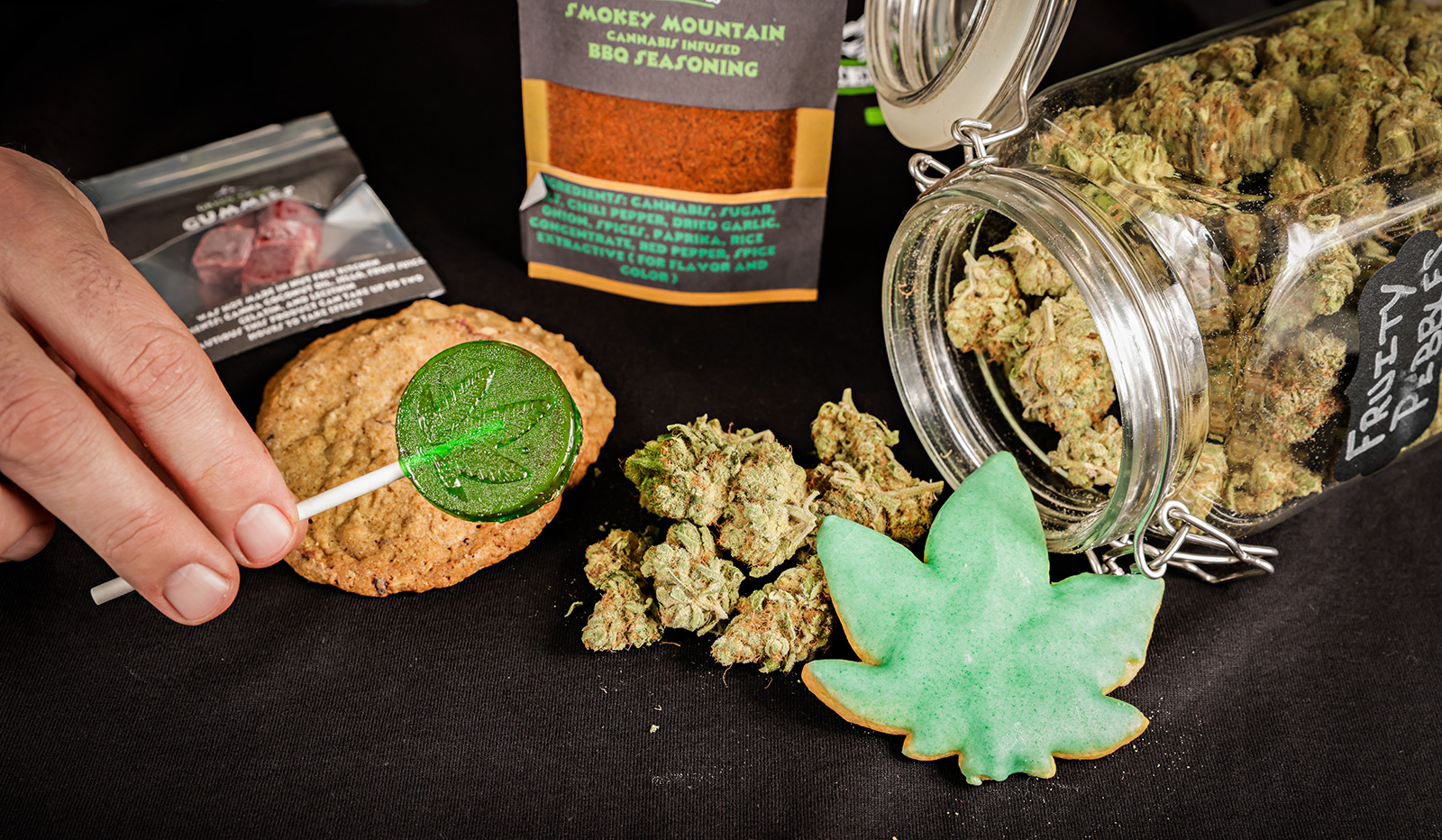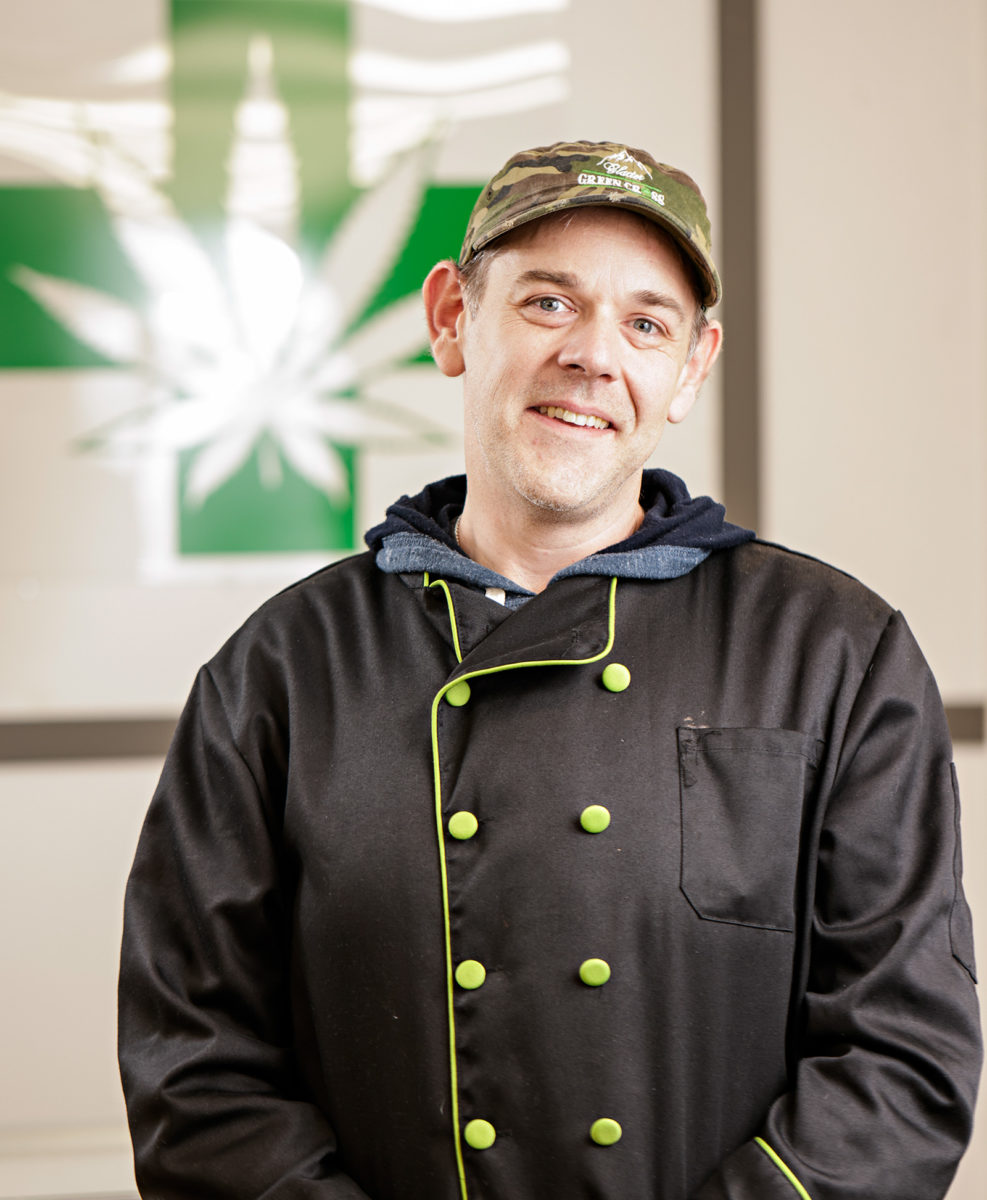Flathead County Dispensaries Exploring Edible Offerings
With recreational marijuana sales comes new opportunities for licensed dispensaries to purchase new products
By Mike Kordenbrock
When he isn’t working at a butcher shop processing meat in Chicago, Benjamin Johnson can be found in Montana, wearing a black chef’s jacket with green lining as he cooks up batches of edible cannabis products for Glacier Green Cross.
Co-owner Wayne Bennett likes to joke that Johnson is his “mad scientist,” although Johnson takes a more measured approach to his work in the kitchen, saying that it comes down to some of the same fundamentals he learned in cooking school, and that putting good quality ingredients in at the start leads to a quality finished product.
What that finished product should be, and who it’s for, continues to be something that local dispensaries puzzle over as the county enters its second full week of recreational marijuana sales.
For Glacier Green Cross, the range of edible cannabis products is wide, and Bennett said they’re trying to get outside the box with their offerings. There are gummies, and hard candies, and also things like coffee beans roasted and tossed in a THC-infused oil, a dry rub Johnson made using actual marijuana flower, sugar cookies and huckleberry oatmeal cookies.
“My mind always goes to what has fat, what can I infuse fat into, and also is that something that will hold up being in a package on a shelf, or in a refrigerator, and still taste good,” Johnson said.
While Glacier Green Cross has variety, some dispensaries have more limited options. Dispensaries currently have to pay for edible products to be lab tested to determine potency and chemical composition, which can cost hundreds of dollars and creates an additional logistical step between creating a product and putting it on shelves. There are also things like packaging and labeling that have to be taken into account. All of that together has led some dispensaries to build a line of edible products with an eye towards shelf stability in order to avoid costly waste.
When it comes to serving size, additional guidelines have to be met—a product can’t contain more than 100 mg of THC, and it has to be broken down into maximum 10 mg servings. Under the regulations prior to recreational sales, dispensaries had to produce their own edible products and couldn’t purchase from each other.

With the onset of recreational sales, those forms of sales are now legal, meaning a wider array of products could start hitting shelves as dispensaries continue to explore the market. Zach Block, owner of Montana Canna, said he’s already bought some chocolate bars and organic, locally sourced honey sticks from Big Mountain Botanicals.
“As the horizontal market matures, we may be taking in beverages from Spark1 down in Missoula,” Block said. “I really think you’re going to see some strong brands come out.”
As those brands continue to emerge, dispensaries are continuing to educate new customers about their products. Bennett, who owns Glacier Green Cross with his brother Carl, said it’s not uncommon for him to spend nearly half his time with a customer explaining the product to them. Johnson went so far as to create informational slides that are displayed on flat screen TVs in the store.
Johnson said that for people curious about edible products, he would recommend they start off first by smoking, and then on a separate occasion try edibles and go slowly. He advised against diving in with something like 50 milligrams of THC “because in three hours you’re going to be calling your grandma…”
Since the product is eaten, it can be difficult to predict the timing of when effects will set in, and the timing and effect can further vary based on the differences between how individual people digest food.
Dave Laing, who works in systems management and general operations over at Big Mountain Botanicals, said something else to take into account is how much a person might enjoy eating the edible product, versus what amount of THC they are comfortable consuming.
“Sometimes a 10 mg serving is one tiny piece of chocolate. Well, if they’ve been given 10 servings in a chocolate bar and somebody says ‘That’s really good,’ and they end up eating five servings, all of a sudden they end up having a negative experience.”
Laing said one conversation they’ve had at Big Mountain Botanicals is whether or not the better edible experience involves lower amounts of THC in a product so that people can eat more of it. “The problem is the state testing procedures are not cheap. It’s very expensive, so a lot of what’s happening is people are squeezing as much as they can into one test batch, and the easiest way to do that is to make them as strong as the state allows you to,” he said. “From a labor perspective they’re packaging substantially less items.”
With a location near the airport, Laing said one thing Big Mountain Botanicals will keep in mind is what its customers from out of state are asking for. He said he’s aware that in some states the edible offerings run the gamut, while the selection in Montana comparatively is more limited.
“Whatever it is today, we’re going to see the relationship with many things and cannabis increase ten-fold in the very near future,” Block said. “It’s a different experience. People are curious and excited. Whether it’s a novelty, or if it (edibles) remains a popular method of consumption remains to be seen. Regardless of where it ends up, we’re kind of at the foot of the mountain right now looking at a really steep incline.”